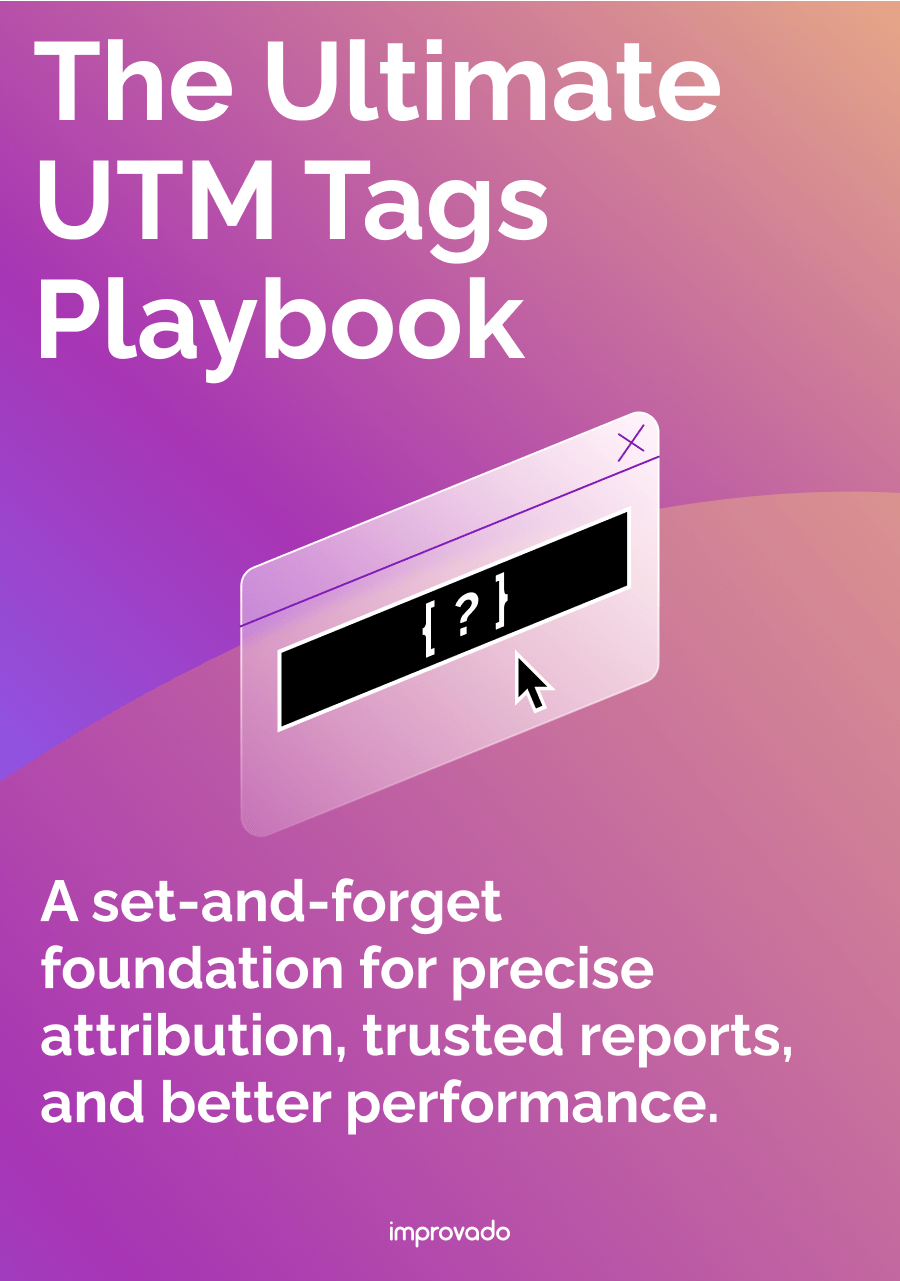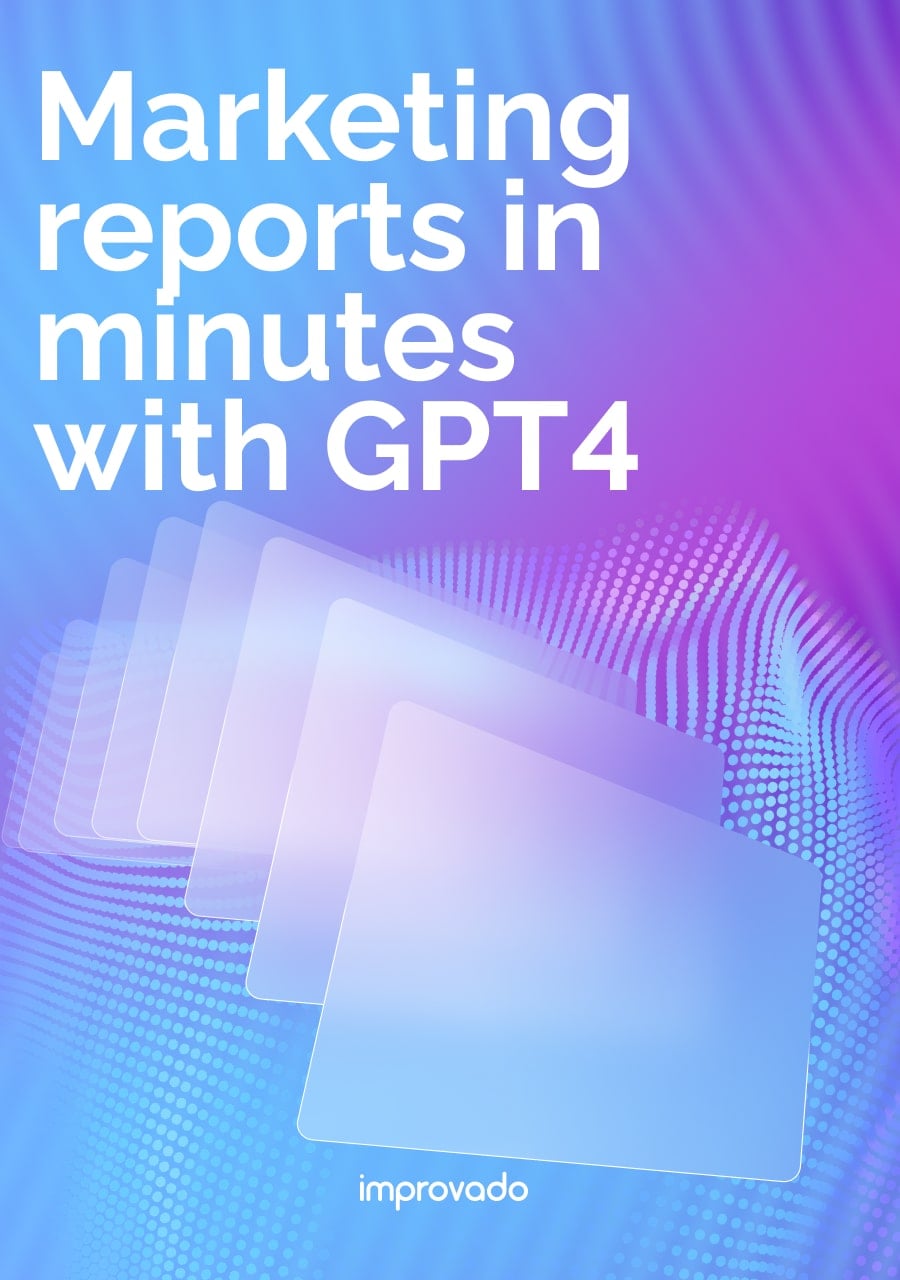Running a marketing agency is about managing dozens of clients, hundreds of campaigns, and distributed talent pools and team members while constantly adapting to the market changes. Without proper systems in place, an agency will always be operating in a state of emergency, struggling to keep up with the demands of the business.
Agency Management Software (AMS) has become the operational backbone that turns this chaos into clarity. By consolidating workflows, it provides the visibility and control agencies need to scale profitably.
Key Takeaways
- Agency Management Software (AMS) unifies projects, clients, finances, and reporting into one platform.
- Core features include project management, CRM, invoicing, analytics, and workflow automation.
- Benefits range from higher productivity and improved client satisfaction to profitability gains and reduced burnout.
- Leading tools in 2025 include Improvado, Monday, Bonsai, Productive, Sprout Social, Zapier, Apollo, Scoro, and Brand24.
- A step-by-step checklist helps agencies choose the right AMS to scale operations effectively.
What Is Agency Management Software (AMS)?
Key Features of Modern AMS Platforms
Modern Agency Management Software (AMS) platforms are built to handle the operational complexity of large marketing agencies, unifying diverse workflows and data streams into a single ecosystem.
Below are the core capabilities that help agencies stay competitive and profitable at scale:
1. Centralized Project and Campaign Management
- Unified campaign visibility: Manage multi-channel campaigns across clients from a single dashboard with granular breakdowns by channel, budget, and team.
- Real-time progress tracking: Monitor milestones, timelines, and deliverables across departments to ensure alignment with client expectations and contractual obligations.
- Cross-team collaboration: Facilitate seamless handoffs between creative, media, analytics, and client service teams, reducing delays and miscommunications.
- Automated task dependencies: Automatically trigger next steps as projects advance, minimizing manual oversight and reducing operational lag.
2. Resource Planning and Workforce Optimization
- Capacity forecasting: Anticipate staffing needs by aligning workload projections with upcoming client deliverables.
- Billable vs. non-billable allocation: Optimize team utilization to protect profitability and reduce hidden labor costs.
- Talent deployment: Assign the right specialists to the right projects based on skill sets, availability, and historical performance.
- Contractor and partner management: Streamline coordination with freelancers and external vendors, integrating them directly into agency workflows.
3. Financial Management and Profitability Tracking
- Integrated budgeting: Link budgets directly to campaigns and line items for accurate real-time spend tracking.
- Revenue forecasting: Predict cash flow and revenue trends by client, project type, or vertical.
- Scope creep monitoring: Set up alerts to flag over-servicing before it impacts margins.
- Automated invoicing and reconciliation: Reduce administrative overhead and billing errors while maintaining financial compliance.
4. Client Collaboration and Communication Tools
- Centralized client portal: Provide clients with direct access to dashboards, reports, and approvals in one secure location.
- Feedback loops: Capture client feedback directly within the AMS to streamline review and revision cycles.
- Custom reporting: Generate branded, on-demand reports tailored to client KPIs, campaign performance, and ROI.
- Audit trails: Maintain transparent records of communications and decisions for compliance and client accountability.
5. Advanced Analytics and Performance Reporting
- Cross-account insights: Aggregate data across multiple clients to identify trends, benchmark performance, and uncover growth opportunities.
- Operational KPIs: Track key metrics like utilization rates, client profitability, and turnaround times to drive operational excellence.
- Revenue attribution modeling: Connect campaign outputs to client business outcomes for precise ROI measurement.
- Integration with BI tools: Push clean, structured data to platforms like Tableau, Power BI, or Looker for deeper analysis.
6. Automation and Workflow Governance
- Approval automation: Automate repetitive processes like creative approvals, compliance checks, and task sign-offs.
- Naming convention enforcement: Maintain consistent taxonomy for projects, clients, and campaigns to reduce reporting errors.
- Governance frameworks: Standardize workflows across geographies, business units, and client verticals to ensure compliance and scalability.
- Custom rule engines: Build and enforce rules to automatically validate data quality, budget pacing, and delivery performance.
The Core Benefits of Using AMS
A modern Agency Management Software platform serves as the foundation for scaling operations, improving performance, and safeguarding profitability. By centralizing workflows, data, and reporting, it enables agencies to operate with precision and agility, even as client demands and market conditions evolve.
1. Improved Visibility and Control
AMS provides a single source of truth for all projects and campaigns, offering real-time insight into budgets, timelines, and performance. This visibility allows leaders to identify risks early, make informed decisions, and ensure accountability across every stage of delivery.
2. Increased Profitability and Margin Protection
With financial data directly tied to resources and deliverables, AMS makes it easier to track margins in real time and prevent revenue erosion. Scope creep and inefficiencies can be flagged immediately, ensuring that work remains profitable and billing stays accurate.
3. Streamlined Collaboration
By unifying communication, tasks, and reporting within one platform, AMS eliminates silos between teams and clients. This seamless collaboration accelerates workflows, reduces duplication, and ensures that everyone is working from the same accurate data set.
4. Scalable Resource Management
AMS simplifies workforce planning by aligning resources with current and future demand. It helps optimize team allocation, forecast staffing needs, and manage contractors effectively, ensuring the right people are deployed to the right projects at the right time.
5. Enhanced Performance Measurement
Through integrated analytics, AMS connects operational data with client outcomes. This allows agencies to track performance at both the campaign and business level, measure true ROI, and use insights to guide strategic decisions and long-term growth.
6. Automation and Governance
By automating repetitive tasks such as approvals, reporting, and data validation, AMS reduces operational overhead and error rates. Built-in governance features maintain consistency in naming conventions and compliance, supporting scale without losing control.
Types of Agency Management Software
Different AMS solutions specialize in distinct areas of agency operations. Larger organizations often adopt a mix of these systems or choose integrated platforms that bring multiple functions together under one roof.
- Project Management Platforms: Focus on planning, scheduling, and tracking campaign deliverables. They provide visibility into timelines, dependencies, and progress across teams and clients.
- Resource Management Systems: Handle workforce planning, capacity forecasting, and utilization tracking. These tools help align staffing with project demand and optimize billable hours.
- Financial Management Suites: Manage budgets, invoicing, revenue forecasting, and margin tracking. They offer real-time insights into profitability and financial performance.
- Client Collaboration Tools: Centralize client communication, approvals, and reporting. By keeping everything in one place, they improve transparency and reduce feedback delays.
- Analytics / Reporting Platforms: Aggregate data from campaigns, channels, and clients to provide performance insights. These tools help agencies measure ROI, track operational KPIs, and make data-driven decisions.
- Integrated AMS Platforms: Combine project, resource, financial, client, and analytics functions into one solution, reducing tool fragmentation and enabling a single, unified view of agency performance.
The Best Agency Management Software Tools for 2025
Choosing the right AMS depends on your agency’s scale, client mix, and operational needs. The table below provides a high-level comparison of leading platforms, outlining their primary strengths and potential drawbacks to help you identify which solution best aligns with your agency’s workflows and growth strategy.
| Tool | Best For | Strengths | Weaknesses |
|---|---|---|---|
| Improvado | Enterprise marketing and advertising agencies managing large data sets | Purpose-built for marketing analytics with 500+ pre-built integrations, automated data normalization, AI-driven insights, and governance controls that standardize metrics and reporting at scale | Too advanced and costly for small agencies with simple reporting needs |
| Monday | Mid-sized cross-functional agencies with mixed client portfolios | Highly visual workflows, customizable templates, fast onboarding; integrates with common agency tools for project visibility and intake | Lacks advanced financials and capacity forecasting needed for complex enterprise structures |
| Bonsai | Freelancers and small boutique agencies | Lightweight all-in-one for contracts, invoicing, proposals, and simple project tracking; quick client portal setup | Not suitable for multi-team resourcing, multi-entity reporting, or granular profitability tracking |
| Productive | Professional service firms and high-growth agencies focused on profitability | Strong financial modeling, time tracking tied to margins, scenario planning for resource allocation, and revenue forecasting | Steep learning curve and no free tier; initial configuration requires dedicated onboarding |
| Sprout Social | Social media-first agencies managing content and engagement | Publishing, listening, competitor benchmarking, and advanced social analytics in one platform; solid client reporting | Limited integrations outside social ecosystems; weak for cross-channel performance unification |
| Zapier | Agencies prioritizing automation across fragmented tool stacks | No-code workflows across 3,000+ apps to connect PM, CRM, billing, and analytics; accelerates repetitive task automation | Complex, multi-step flows can be brittle at scale and require monitoring/version control |
| Apollo | Growth-driven agencies focused on acquisition and outbound sales | Built-in B2B database, sales engagement automation, sequencing, and enrichment for pipeline acceleration | Coverage gaps in niche verticals; limited customization for specialized data models |
| Scoro | Agencies seeking unified operations across finance and delivery | Combines financial management, project tracking, quoting, and resource scheduling for full operational oversight | Longer implementation time; higher complexity for initial setup and change management |
| Brand24 | Agencies focused on brand health and online reputation | Social listening with sentiment analysis, influencer identification, share-of-voice and alerting | Occasional inaccuracies in sentiment/keyword classification; limited operational tooling |
| Asana | Creative and production-heavy teams with distributed workflows | Intuitive task management, collaboration, templates, and scalable permissions for multi-team execution | Limited native financials and deep resource planning; requires addons for utilization/margins |
| Workamajig | Mid-to-large creative agencies handling complex retainers | Industry-specific workflows with integrated project, traffic, time, and finance modules | Dated UI and steeper onboarding; customization needs careful admin ownership |
| Wrike | Large agencies with multi-departmental projects and compliance needs | Highly configurable spaces, advanced reporting, proofing, and granular permissions for enterprise governance | Configuration complexity can slow adoption; benefits require disciplined process design |
Common Challenges in AMS Implementation
Deploying an Agency Management Software platform can transform operations, but successful implementation requires careful planning and change management. Without the right approach, agencies risk stalled adoption, data silos, and wasted investment. Below are the most common challenges encountered during AMS rollouts and how they impact long-term success.
1. Resistance to Change
Teams accustomed to legacy tools or manual workflows often push back against new systems. Without clear communication of benefits and proper onboarding, adoption rates suffer, leading to partial use of the platform and inconsistent data.
2. Data Migration Complexity
Migrating historical project, client, and financial data into a new AMS is rarely straightforward. Inconsistent naming conventions, duplicate records, and incompatible formats can disrupt migration, resulting in data loss or inaccuracies that undermine reporting.
3. Lack of Process Standardization
If existing processes vary widely across teams or departments, an AMS can amplify rather than solve inefficiencies. Without alignment on workflows, taxonomies, and reporting structures before implementation, the system becomes fragmented and difficult to manage.
4. Integration Gaps
Many agencies rely on a diverse tech stack, including CRMs, marketing automation platforms, BI tools, and financial systems. Failing to integrate these tools with the AMS creates silos, forcing teams back into manual reporting and reducing the value of the platform.
5. Underestimating Training Needs
Even with an intuitive interface, AMS platforms require role-specific training to ensure users understand both features and agency-wide processes. Insufficient training leads to inconsistent usage, poor data quality, and frustration among staff.
6. Poor Governance and Oversight
Without clear ownership and governance policies, AMS implementations can quickly drift out of alignment. Issues like inconsistent data entry, unmanaged permissions, and lack of audit trails compromise both operational efficiency and compliance.
7. Inadequate Measurement of Success
Agencies sometimes launch AMS platforms without defining success metrics. Without clear KPIs, it's difficult to evaluate ROI, identify gaps, or drive continuous improvement, leaving leadership unsure whether the system is delivering its intended value.
How to Choose the Right Agency Management Software: Checklist
Selecting the right AMS is a strategic decision that impacts every aspect of agency operations, from client reporting to resource planning and profitability tracking. Use this checklist to evaluate solutions and ensure the platform aligns with your current needs and future growth plans.
- Define Core Needs and Goals: Identify the biggest pain points you need to solve, such as reporting inefficiencies, resource management, or cross-team collaboration.
- Assess Integration Capabilities: Ensure the AMS can connect seamlessly to your existing tech stack, including CRMs, analytics platforms, financial systems, and data warehouses.
- Evaluate Scalability: Choose a system that supports your projected growth, from client volume to complex multi-team, multi-entity structures.
- Check Data Governance and Accuracy: Look for tools with built-in governance features like naming convention enforcement, automated validation, and audit trails to maintain data integrity.
- Review Analytics and Reporting Depth: Confirm the platform offers advanced analytics, customizable dashboards, and client-ready reporting without heavy manual effort.
- Measure Usability and Adoption Potential: Consider ease of use for both internal teams and clients, as well as the quality of training and support resources provided.
- Understand Total Cost of Ownership: Go beyond license fees, factor in onboarding, integrations, support, and potential costs tied to scaling or customization.
- Verify Security and Compliance: Ensure the platform meets privacy regulations and security standards, including SOC 2, GDPR, or HIPAA, where relevant.
- Run a Pilot or Proof of Concept: Test the AMS with a small group or client portfolio to validate fit before full-scale implementation.
- Set Success Metrics in Advance: Define clear KPIs such as reporting speed, margin tracking accuracy, or client satisfaction to measure ROI post-deployment.
By following this checklist, agencies can confidently select an AMS that not only solves today’s challenges but also supports long-term scalability and operational excellence.
Future-Proofing Your Agency with AMS
As agencies grow, operational complexity, fragmented data, and client demands can quickly outpace manual workflows and disconnected tools. A modern AMS creates the infrastructure needed to scale efficiently, ensuring every project, resource, and decision is backed by accurate, real-time data. By centralizing operations, agencies can protect margins, improve client satisfaction, and adapt quickly to industry changes.
Improvado takes this a step further by unifying marketing and operational data from 500+ sources into a single governed environment. With built-in automation, advanced analytics, and AI-driven insights, it eliminates manual reporting and provides the foundation for predictable, scalable growth.
See how Improvado can help your agency evolve beyond spreadsheets and point solutions — explore Improvado’s solution for Agencies or book a demo today and future-proof your agency’s data and operations.
.png)







.png)
